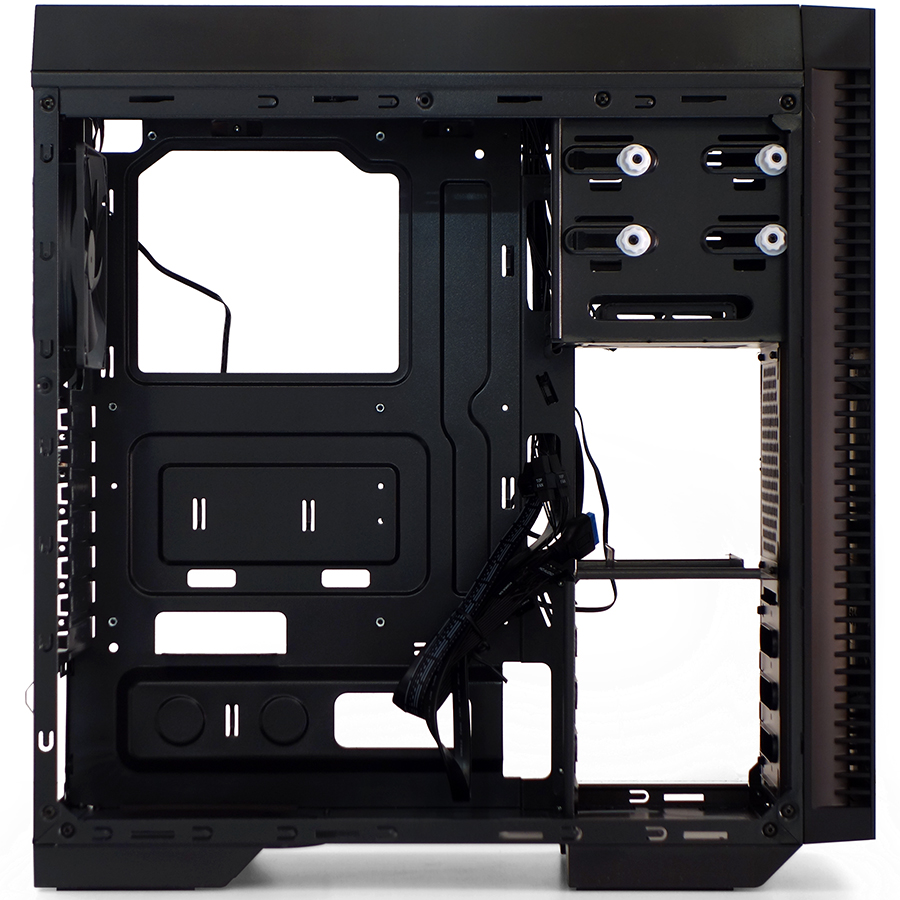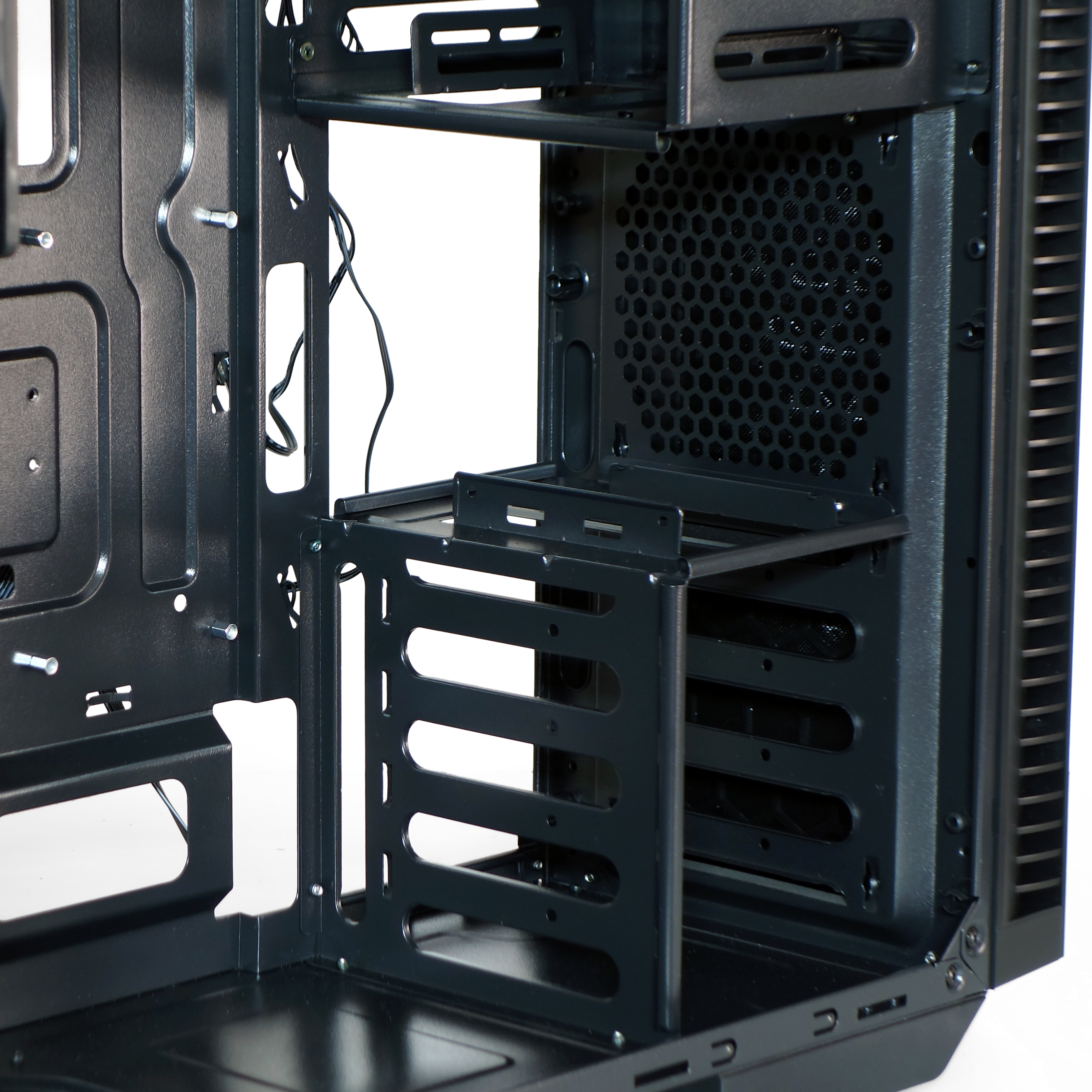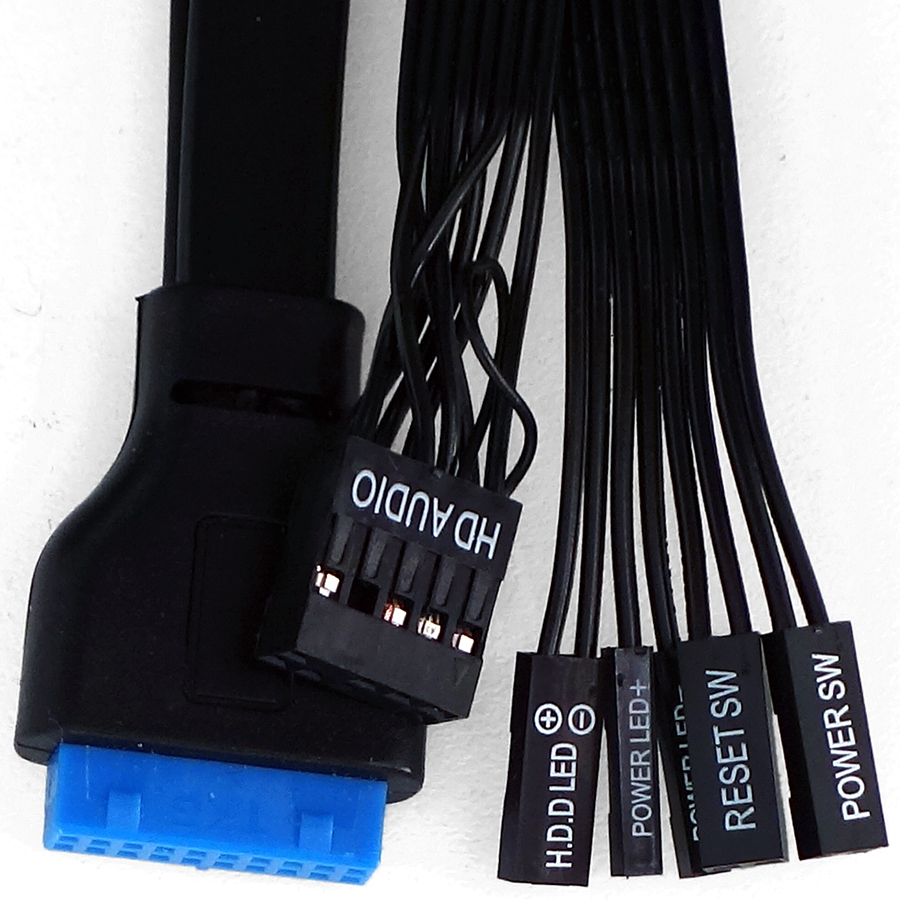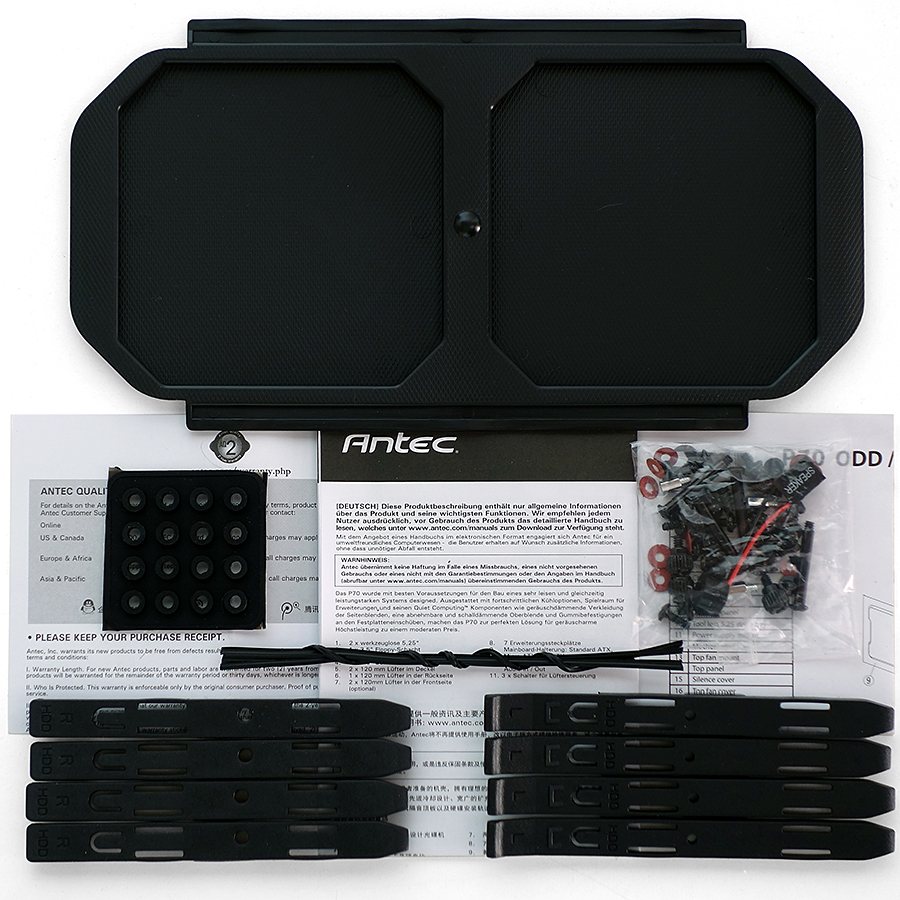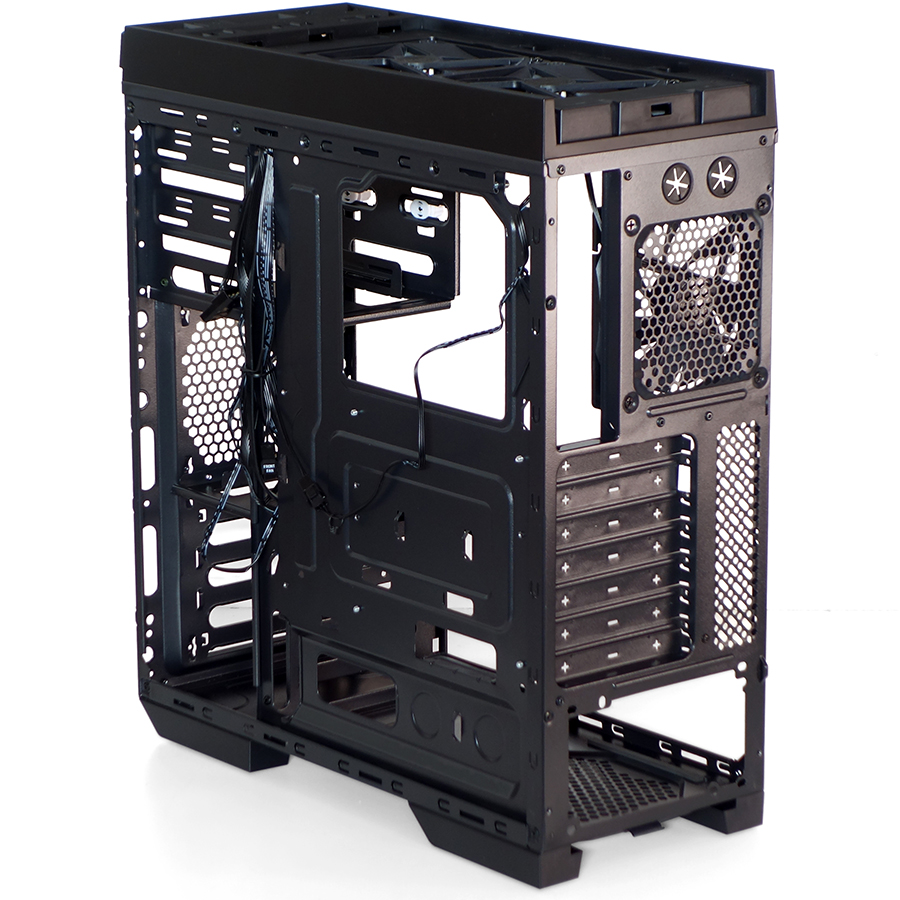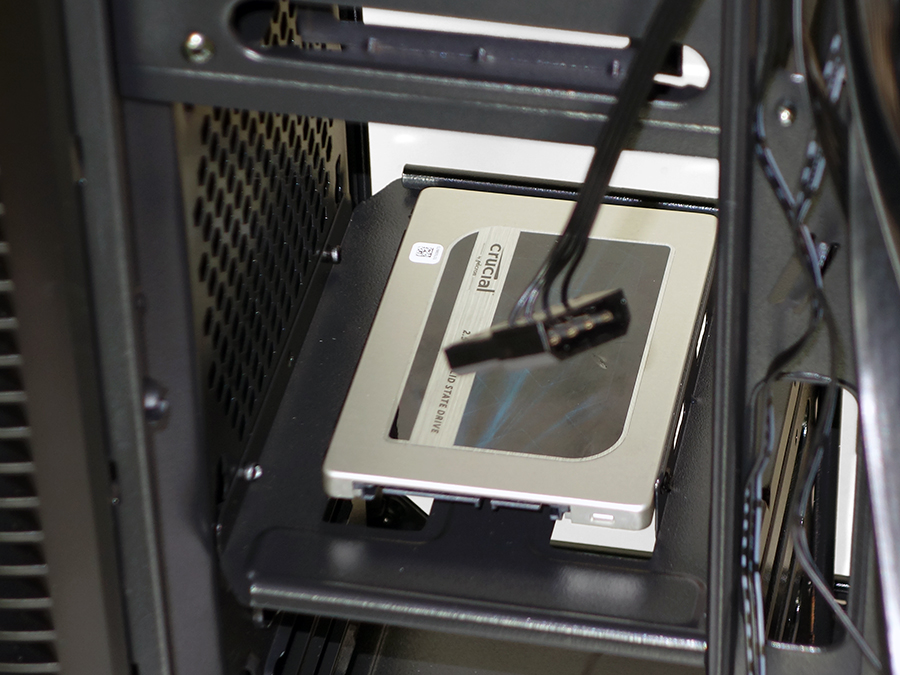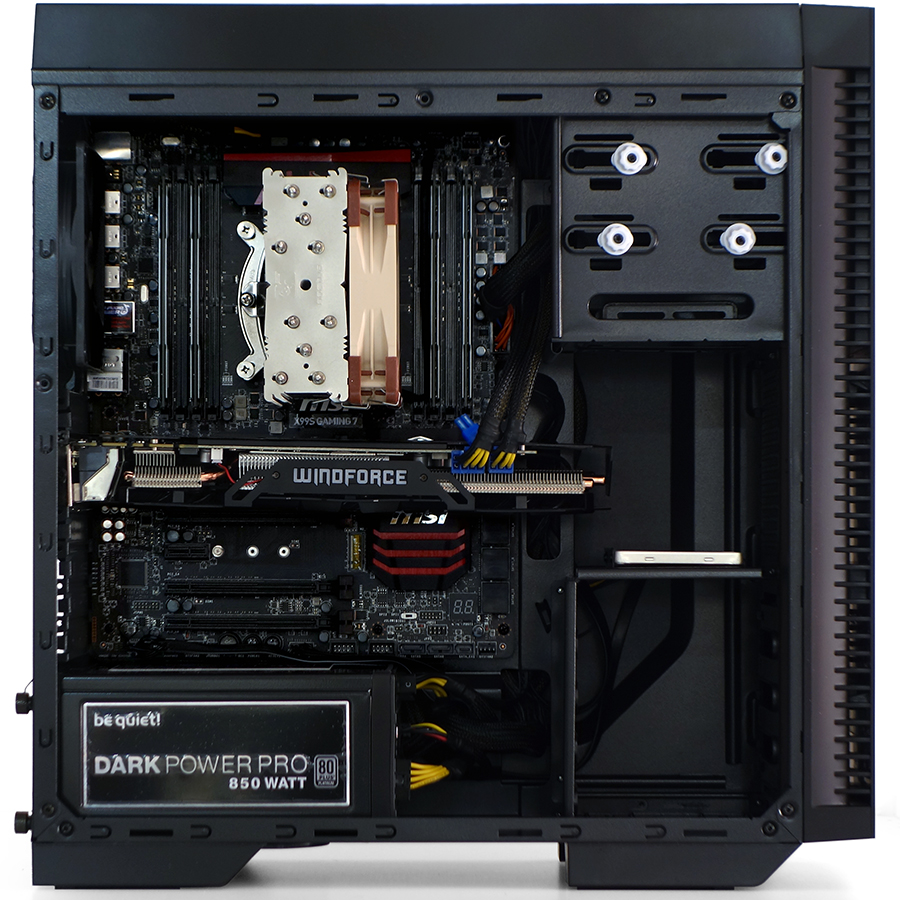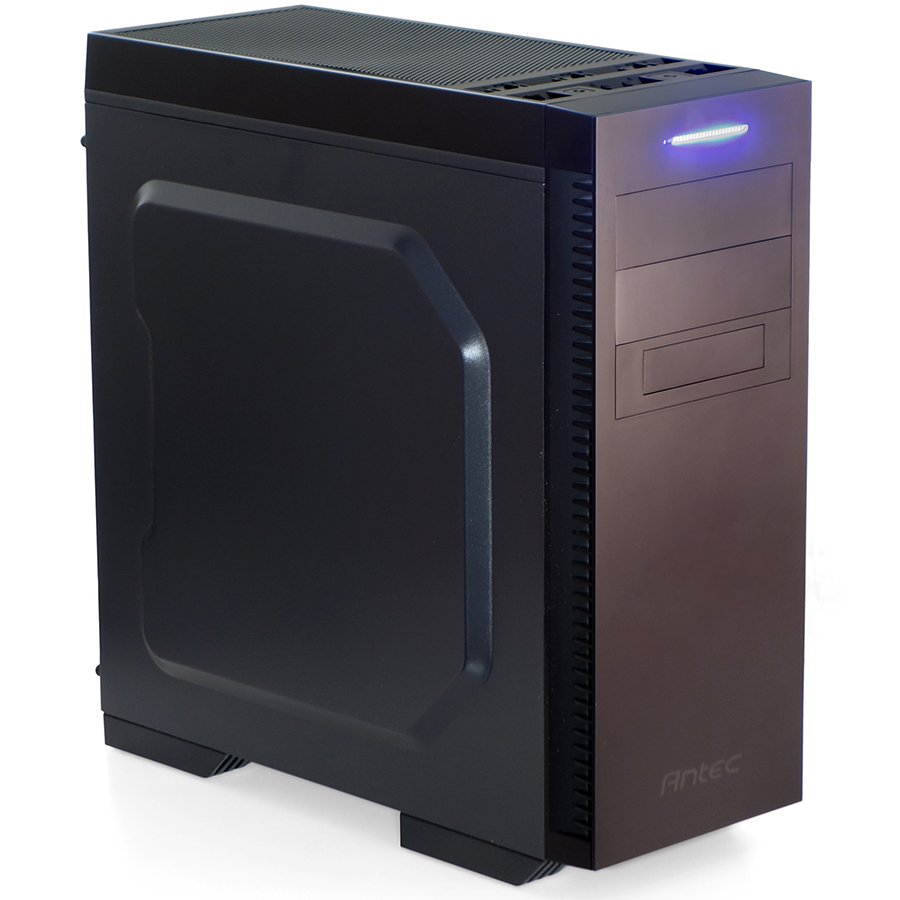Antec P70 ATX Mid-Tower Case Review
Antec’s latest low-cost chassis carries the company's gaming hardware-oriented “Performance” moniker, but can it really perform? We find out.
Why you can trust Tom's Hardware
Building Inside The Antec P70
The P70 doesn’t have internal grommets. But cable passage holes are rolled over for a burr-free edge. Antec adds a couple of extra holes to clean up the installation of microATX boards. It also adds a lip at the front edge of the motherboard tray 9.75” from the back, though. Even slightly oversized boards won’t fit.
Long graphics cards (up to 15.1”) fit into the P70’s top four slots; medium-length cards (up to 10.8”) drop into the bottom two. The stepped-in 2.5” SSD bay atop the 3.5” cage gives builders an extra inch of space (up to 11.8”) in front of the fifth slot.
That gives you one 2.5” and four 3.5” internal bays, though the external 3.5" bay's integrated mounting bracket is also designed to attach hard drives. Screws for installing optical drives are mounted to sliding pegs that rattle around as the case is moved.
The P70 only has a pair of USB 3.0 ports, so there's just one corresponding USB cable. The front-panel LED cable is split so that it supports both Asus (three-pin spacing) motherboards and everyone else (two-pin spacing).
Surprisingly, the P70 has a cover plate for top-panel fan mounts, in case you want to move those fans to the front and keep dust from settling in through the top. It also comes with four sets of 3.5” hard drive rails, a set of twist ties for organizing cables, 16 foam washers for dampening screws and a screw pack with a bundled motherboard speaker.
Side panel bulges are required since the P70 has very little space for cables. Builders must lay cables out carefully to minimize crossing. Otherwise, those thin side panels can easily be warped.
The SSD bay requires straight cable connectors as well, which could be a problem on motherboards that only include right-angle cables. We reduced the number of power cables in our installation by using a four-pin drive cable and a four-pin-to-SATA power adapter.
Get Tom's Hardware's best news and in-depth reviews, straight to your inbox.
The lack of space for slightly oversized motherboards like our X99S XPower AC forced us to use the smaller X99S Gaming 7. This is starting to look like bothersome trend with mainstream cases.
The P70’s power LED was bright enough to “blow out” the images we captured of it. We spliced two of them together rather than track down a bunch of extra foreground lights to minimize the effect. To the left of the main light row, two more lights indicate drive activity.
-
SinxarKnights Hmm I just got rid of my 300 about a month ago. Is this really the 300's replacement? The 300 lacked any 2.5" bays but had great cooling with only the 2 included three speed fans. It seems they made the same mistake twice by sitting the motherboard too close to the top so it is practically impossible to mount a rad on the inside there.Reply
Considering it is a $70 case, surely there must be much better options than this for budget builders. -
JeanLuc Argh, what's wrong with the site?? All the alignment is out. I was reading through the price list and the case came up at $46.99 now it says $70.Reply -
SinxarKnights Reply15864394 said:^^ It's not a $70 case you can pick it up for $47.
It is 47 because it is on sale. It is a $70 case. -
Plyro109 I'm rather sad Antec still doesn't seem to want to make fan filters easy to access. That's why I replaced my 902, and why I've been steering people away from their cases for a while.Reply
To clean the filters on the 902, it required removing 20(!) screws, and this case requires the removal of the front panel, and thus, both the side panels also. At the least, it looks like the top and rear filters are a bit easier to access, which is a step forward.
Probably not a case I'll be recommending for others to use, even if it is inexpensive. -
InvalidError Reply
The 300-2 had one 2.5" spot at the bottom and another behind the motherboard tray.15864007 said:Hmm I just got rid of my 300 about a month ago. Is this really the 300's replacement? The 300 lacked any 2.5" bays
I own both a 300 and 300-2. My biggest pet peeve about them is having to unplug everything I may have plugged into front jacks and open the side panel to un-clip the front panel so I can remove it every time I want to clean the filters. Another problem with the 300s is that the filter sits so close to the front mesh that dust accumulates directly behind the front mesh' holes - there is not enough space for airflow to spread out evenly across the filter. I would probably need to clean the filter half as often if there was even only 1mm of extra clearance here.
Yet another filter-related pet peeve is the PSU filter: half the dust gets scraped off the filter and sucked right back in when the filter is removed for cleaning. IMO, the 300-2 would have been better off without it, letting the PSU draw from case air like it did in the original 300. -
jimmysmitty I think that Antec has been left behind in terms of case design. I do remember when I wanted a 900 but most of their cases are just now coming with features that others have had.Reply
I find it strange that this is lacking side fan mounts. Even the Corsair 200R has those and that is a $60 dollar case right now. -
InvalidError Reply
The 300-2 had side fan mounts on both panels. On my case though, both of them are taped shut to limit dust ingress. In an ocean of cases with goady side panels. There is no point in having windows or side vents when the case is wedged between a desk and a wall. The top fan is unplugged and the vent taped shut to prevent screws and whatever else I might have on my desk dropping into my PC through the top fan.15865011 said:I find it strange that this is lacking side fan mounts. Even the Corsair 200R has those and that is a $60 dollar case right now.
Sometimes, less is more. I would pay $10 more than I paid for my 300-2 for an otherwise identical case that had no side vents, no dedicated PSU filter/intake and no top vent for me to worry about but had direct access to intake filters. -
aldenf I'll assume, since it is not mentioned in the article, that the two top fans are configured for exhaust. Three exhaust and no intake fans seems completely inappropriate for hot hardware. Since the option is provided "out of the box", I'd like to see the top fans moved to the front as intakes and the plug/panel installed on top. This should show very different numbers in testing. I'm rather surprised it wasn't attempted initially by the builder/reviewer as it seems rather obvious.Reply
I'm not sure how many users would be trying to squeeze an extended MB into an inexpensive case. I don't see it as a con at all. Many enthusiasts look for more compact cases for ATX/m-ATX builds. If the P70 will often be on sale for <$50 and moving the two top fans to the front as intakes shows better all around performance as I expect, methinks the P70 could be a killer option for moderately priced gaming rigs/workstations.
I'll wait for a more thorough review of the product before making any final judgements...
